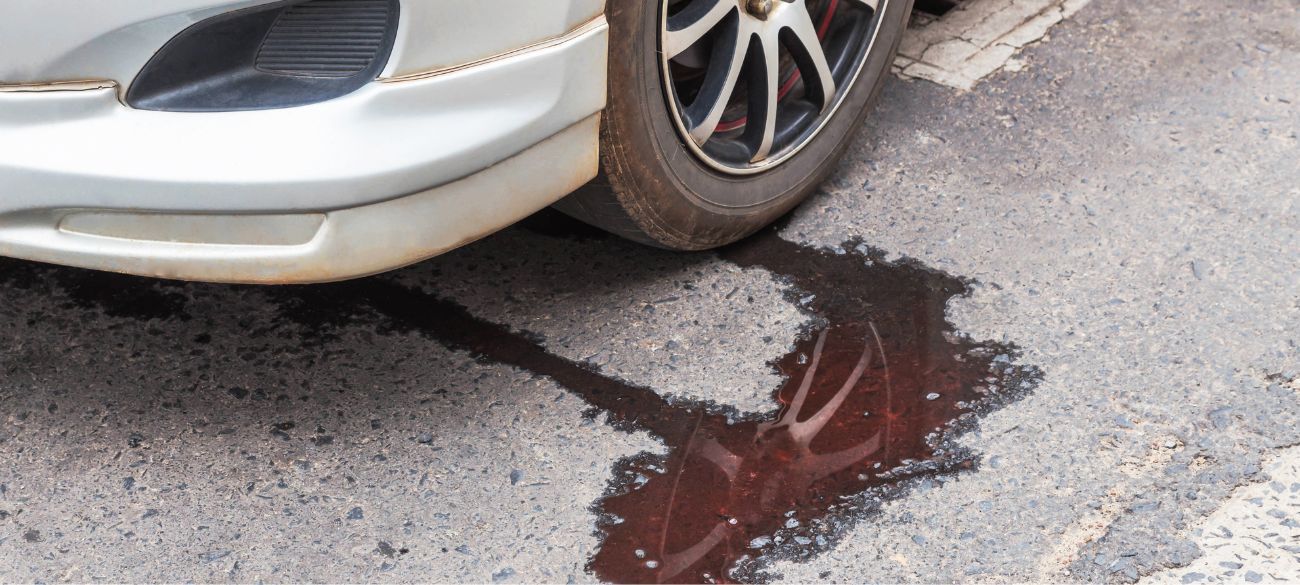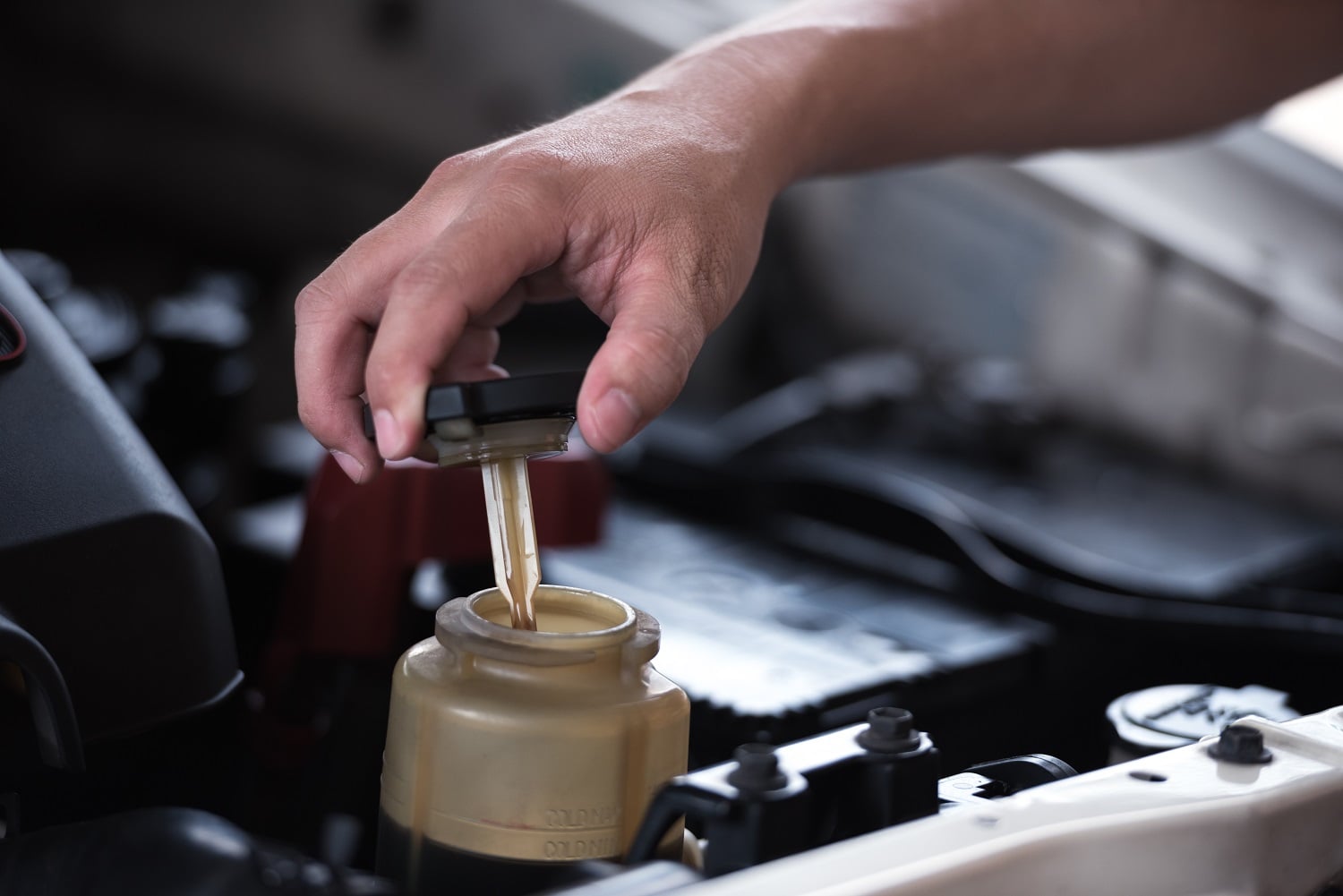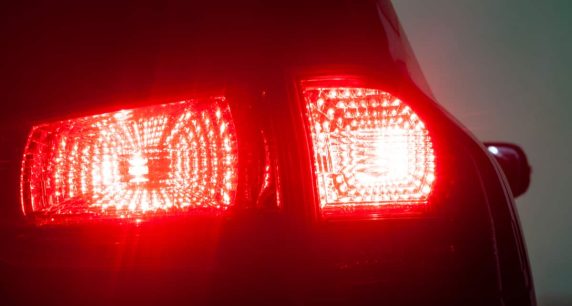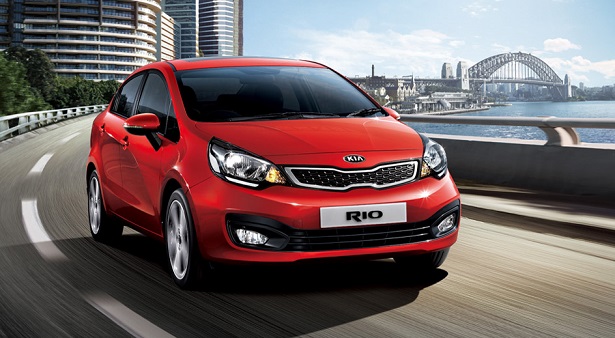Software errors in Kia Rio affect thousands of UAE drivers, with nearly 100,000 vehicles showing these issues. The car remains popular in the region, where a used 2017 model costs between AED 15,200 and AED 19,900. Yet many owners deal with frustrating problems that can ruin their driving experience.
The Kia Rio delivers excellent fuel economy at 6.3 L/100km and comes as a 4-door sedan or 5-door hatchback. However, we’ve seen troubling issues across different model years. From 2007 to 2016, several problems keep showing up whatever the generation. Owners often report engine idling troubles, transmission glitches, and electrical system challenges as Rio’s common faults. The Rio earned a 5-star crash-test rating in Europe. Models sold in the GCC don’t include certain safety features, which makes reliability an even bigger concern.
Your Rio needs regular maintenance every 7,500 miles to perform well. Yet some problems seem impossible to avoid. Understanding these nine most common problems could save you much time, money, and stress if you own a Rio or plan to buy one in the UAE.
Engine Misfire

Engine misfire ranks as one of the most frustrating problems Kia Rio owners face in the UAE. This problem affects Kia Rio models from 2007 to 2016 and can lead to major performance issues if you don’t address them quickly.
Engine Misfire symptoms in Kia Rio
You can save money on repairs by spotting engine misfire symptoms early. Your first clue might be rough idling – the engine shakes or the vehicle vibrates more than usual while it’s not moving. The car will start to lose power and acceleration as the problem gets worse. Your Rio won’t pick up speed like it used to and feels sluggish during operation.
Your Rio’s engine will also burn more fuel because it tries to make up for the misfire. You’ll notice more frequent stops at the gas station than before.
The check engine light on your dashboard gives you the clearest warning sign. The light might flash instead of staying steady in serious cases, and this means you need to get help right away. You might feel the car stutter or skip when you’re driving at low RPMs (below 1500), but these symptoms often disappear at higher speeds.
Why Engine Misfire happens in Kia Rio
Kia Rios misfire for several reasons. Bad spark plugs top the list of culprits – these cars go through spark plugs faster than most. The Rio’s high-compression GDI engines need spark plugs to be in perfect condition with exact gap measurements.
Bad ignition coils create another common issue. Each spark plug needs an ignition coil to boost 12 volts up to about 60,000 volts for proper combustion. Misfires happen when these coils wear out and can’t deliver enough voltage.
The fuel system can also cause misfires. Here’s what can go wrong:
- Fuel injectors that don’t spray correctly
- Water getting trapped in the injectors
- Weak high pressure fuel pumps
- Fuel filters that get clogged up
Oil can drip into spark plug holes from a leaky valve cover gasket and mess up the electrical connections. Vacuum leaks let in extra air that throws off the engine’s fuel-air mix.
How to fix Engine Misfire in Kia Rio
Start by running diagnostic tests. An OBD2 scanner helps you find exactly where the misfire happens. Look for codes like P0300 (random misfire) or P0301-P0304 (specific cylinder misfires) – they tell you a lot about what’s wrong.
Replace the spark plugs first – it’s easy and often fixes the problem. Make sure you get the right type for your Rio’s GDI engine and set the gap just right.
Mechanics can find bad ignition coils with a swap test. They move the coil they think is bad to another cylinder to see if the misfire follows it. Moving a coil from cylinder #1 to #2, clearing the codes, and watching the misfire move proves the coil has gone bad.
You can fix fuel system misfires by:
- Cleaning or putting in new fuel injectors
- Replacing fuel filters
- Checking the fuel pump works right
Following Kia’s maintenance schedule prevents many misfire causes. Remember to change spark plugs, air filters, and fuel filters on time.
Take your car to a professional if misfires keep happening, especially in 2007 models or others with known issues. The problem might be low compression or computer faults.
ABS Warning Light

The ABS warning light stands out as one of the most worrying Kia Rio problems UAE drivers face, especially in 2016 Kia Rio problem reports. Your vehicle’s braking performance can be at risk because this safety-critical system might fail without any warning, unlike engine issues that build up over time.
ABS Light issue in Kia Rio
A properly working ABS (Anti-lock Brake System) keeps wheels from locking during emergency braking and helps you maintain steering control and stability. The system’s warning light lighting up on the dashboard is a common Kia Rio fault that causes concern.
Your Kia Rio’s ABS warning light normally lights up for about 3 seconds when you switch the ignition to ON, then turns off after a self-check. The light staying on or coming on while you drive points to a system problem.
Many 2018 Kia Rio owners say their ABS light stays on along with the traction control light. These important safety features become disabled right when you might need them most.
From 2007 Kia Rio problems to newer models, a lit warning light doesn’t always mean your regular brakes have failed. Your main braking system still works, but you lose the anti-lock feature that stops skidding during hard braking.
Common causes of ABS light
Several things can make your Kia Rio’s ABS warning light turn on. Bad wheel speed sensors are the most common cause. These sensors track how fast each wheel spins, and a failed sensor means the system can’t detect potential wheel lock-ups.
Low brake fluid can trigger the ABS light too, usually along with the brake warning light. Damaged sensor wires from road debris or poor repairs can also create bad connections that mess with signals to the ABS control module.
Software issues have become more common in 2013 and 2016 Kia Rio problems. Some cases show error code C1606 (ECU/software error) during scanning, and only a specific software update fixes the issue.
Other common causes include:
- ABS module failure (mostly in older models)
- Damaged tone rings (the toothed parts that sensors read)
- Bad ABS relay in the fuse box
- Corroded connectors from water or road salt exposure
Some 2018 Rio owners found both rear ABS sensors failed at once, which might point to design or manufacturing issues in that year’s model.
Fixing ABS sensor problems
Start by scanning for specific error codes if your ABS warning light comes on. Most auto parts stores scan codes for free. The code helps you figure out which part needs attention.
Replacing wheel speed sensors often fixes the problem. Use penetrating oil on the old sensor to avoid breaking it during removal. Most Kia Rio ABS sensors use 10mm bolts you can reach after taking off the wheel.
Many 2018 model owners fixed their warning light by replacing rear wheel speed sensors. Clean the sensor hole with fine sandpaper to remove rust before putting in the new sensor.
You’ll need dealer equipment or special diagnostic tools for software issues in newer models. Some owners say dealer software updates have fixed stubborn ABS warning lights.
Keep in mind that while regular brakes work when the ABS light is on, drive carefully and get repairs done soon. The system stops skidding in emergencies – exactly when you don’t want to find out it’s not working.
UAE’s diverse conditions make working ABS systems crucial in your Kia Rio, from Dubai’s wet winter roads to Abu Dhabi’s hot summer highways. This ensures safe driving in all conditions.
Fuel Leak Issue

Kia Rio owners in the UAE need to spot fuel leaks early. These leaks are among the most dangerous problems that affect Rio models of all years. Safety concerns from fuel leaks need quick action, whether you own a 2007 or 2016 model.
Fuel leak symptoms in Kia Rio
Your Kia Rio might have a fuel leak if you notice certain warning signs. A strong gasoline smell inside or around your car is the first sign most people notice. This smell becomes stronger in enclosed spaces or right after you fill up the tank.
You might also see clear signs of leakage – fuel puddles or stains under your parked car. These wet spots usually show up right below the fuel tank or along the fuel lines.
Other warning signs include:
- Your car suddenly uses more fuel than usual
- The engine loses power or stalls unexpectedly
- The check engine light stays on
- The car doesn’t start easily, especially in the morning
Many drivers say fuel leaks become obvious when the tank is more than half full, which points to pressure problems. Some Rio models leak only in specific situations – like during right turns or while going downhill.
Recall-related fuel rail issue
Kia recalled certain Rio models built between May 4, 2000, and March 31, 2004 because of fuel leak risks. The recall focused on a serious defect where cracks could develop in the fuel inlet fitting on the fuel distributor.
Engineers found these cracks typically formed at the fuel inlet fitting connection point. Kia fixed this by creating a new fuel distributor with a steel inlet fitting instead of plastic, plus a better flexible fuel line.
The recall work included replacing both parts at no cost to owners. Kia told owners not to sell or drive affected Rios until repairs were complete.
How to fix Kia Rio fuel leak
Finding the exact source of a fuel leak requires expert knowledge. Professional diagnosis helps because fuel system parts work together closely, whether you have a 2016 model or other years.
Check if your car needs recall work by entering your 17-digit VIN on Kia’s official recall website. Authorized Kia dealers will fix recall-related issues free of charge.
Common repairs for non-recall leaks include:
- Replacing the fuel distributor when connection points crack
- Fixing flexible fuel lines that show damage or wear
- Repairing the tank, especially in diesel models where corrosion creates tiny holes – this might need special epoxy or a new tank
Fuel leaks create fire risks, so they’re not suitable for DIY repairs. Professional mechanics use special equipment and smoke tests to find exact leak locations. Repair costs vary based on what needs fixing – from AED 422 for a new gas cap to AED 5,700 for a complete tank replacement.
Fuel system problems are both common and serious for Kia Rios in the UAE. Quick repairs protect your car and prevent dangerous fire hazards that could risk lives.
Excessive Vibration

Kia Rio owners in the UAE often deal with excessive vibration problems. These issues show up at certain speeds and driving conditions. The problem affects multiple generations of the car, from 2007 models to newer versions, making drives uncomfortable and risking long-term damage.
Vibration causes in Kia Rio
Several key areas cause most vibration issues in Kia Rio vehicles. The wheel-related problems usually show up when driving between 40-45 mph, especially after the car warms up. UAE’s hot summer weather makes these problems even more obvious.
The steering wheel wobbles mainly because of unbalanced tires. This happens when tire weight isn’t spread evenly due to wear patterns or missing wheel weights.
Bad suspension parts also make the car shake a lot. The main culprits are:
- Bad ball joints and tie rod ends
- Bent or misaligned axles
- Worn wheel bearings that move irregularly
- Worn out engine mounts that let the engine move too much
Many Rio owners have tried fixing these issues with wheel balancing, alignment checks, and new steering parts. Yet the vibrations continue.
Rear shock mount failure
The 2016 and older Rio models shake too much because their rear shock mounts often fail. These mounts connect shock absorbers to the car’s frame and smooth out bumpy roads.
UAE’s tough climate and road conditions wear down these rubber mounts quickly. Failed shock mounts let vibrations travel straight through the car instead of being absorbed by the suspension. You’ll first notice more road noise, then the car starts shaking over small bumps.
Look for these signs of bad shock mounts:
- The car bounces too much after bumps
- The front dips down during braking
- Tires wear unevenly with cup-like patterns
- Knocking or creaking sounds from the back suspension
Hot weather makes these problems worse, which is tough on Rio shock mounts in UAE’s climate.
How to replace shock mounts
You can replace Kia Rio shock mounts yourself if you’re good with tools. You’ll need to remove two bolts at the top mount and one at the bottom of the shock absorber.
Start by spraying penetrating fluid on all bolts and wait a bit. This makes them easier to remove. Use an impact wrench or regular wrench with vise grips to take off the top nut while holding the shock piston rod steady.
Put the new shock mount in the right way after taking everything apart. Make sure the dust boot fits correctly over the shock’s protective ring to avoid early failure. Complete replacement kits with shock mounts, dust sleeves, and bump stops cost about AED 180 in UAE.
Professional mechanics charge between AED 348-458 to diagnose and replace these parts. Check these components every 80,000-100,000 kilometers to avoid the vibration problems that many Rio owners report.
Power Steering Noise

Kia Rio drivers in the UAE often report power steering noise as one of their biggest problems. This issue affects multiple model years and needs immediate attention to avoid costly repairs.
Power steering noise in Kia Rio
Kia Rio vehicles make a distinct whining or groaning sound at the time you turn the steering wheel. The noise becomes more noticeable during cold starts or when you make tight turns while parking. The sound usually fades away as your vehicle warms up.
This problem affects models from 2007 through 2016. It stands out as one of the most common issues that continued through later generations. Cold temperatures make the noise worse, which creates challenges during UAE winter mornings. Some drivers need to put in extra effort to turn their steering wheel in severe cases.
Oil seal lubrication issue
The noise comes from poor lubrication on the oil sealing ring of the input shaft. This manufacturing defect creates too much friction when drivers turn their steering wheel, which results in that characteristic whining sound.
Kia’s official documents mention that you might hear motor noise especially when your car stops or moves slowly. They consider this “normal” in cold temperatures.
Older Rio models that use hydraulic power steering systems can develop problems with wrong fluid types. You should use clear fluid since red transmission fluid can damage your system and create ongoing noise.
Fixing the power steering noise
Here’s what you need to do to fix this common Kia Rio fault:
- Use manufacturer-recommended fluid and check its levels
- Get a new oil seal with proper lubrication before you install it
- Look at the power steering belt tension since loose belts can squeal
Electric power steering systems in 2013 models need professional diagnosis. Mechanics need special tools to repair these systems properly. UAE mechanics charge between AED 350-450 for power steering flush services.
Your power steering pump might need replacement if the noise continues after you change the fluid. New replacement pumps in UAE cost between AED 560-710, depending on your car’s year.
Stalling Problem

Kia Rio vehicles across the UAE face serious stalling problems that catch drivers off-guard at the worst possible times. This frustrating issue affects models from 2007 through 2017, leaving many owners stranded on the road.
Kia Rio stalling symptoms
The engine shuts down suddenly without any warning signs. Most owners say their cars simply turn off while they’re stopped at traffic lights or moving slowly. The shutdown happens instantly – the car runs smoothly one moment and dies the next.
The battery and oil warning lights on the dashboard usually come on together when the car stalls. While the tachometer drops to zero, the car’s electronic systems keep working.
The stalling follows a clear pattern:
- Happens rarely at first (once or twice monthly)
- Gets more frequent over time (up to daily occurrences)
- Shows up mostly in the first 10-15 minutes of driving
- Happens more often in hot weather
The good news is that most affected vehicles start right back up. Sometimes drivers need to wait 30-60 seconds before the car will start again.
Software-related stalling issue
Diagnostic scans point to the crankshaft position sensor as the main culprit in these frustrating stalls. This sensor gives crucial timing data to the Engine Control Unit (ECU).
The ECU shuts down the engine to protect it when it gets confusing signals from this sensor – a common problem in 2013 models and other years. Bad sensor signals make the ECU think the engine might be damaged.
Sometimes dirty or faulty Idle Air Control valves or Mass Air Flow sensors cause stalling too. These parts need to work properly to maintain the right air-fuel mix for the engine.
How to resolve stalling in Kia Rio
Start by running a diagnostic scan with an OBD-II reader. Regular scanners might not show error codes, but professional tools can find subtle problems.
Replacing the crankshaft position sensor often fixes everything. Many UAE Kia owners say this solved their problems completely. The part costs about AED 642.59 in the UAE.
If your car keeps stalling without error codes, mechanics suggest:
- Clean the throttle body and idle air control valve
- Look for vacuum leaks near the intake manifold
- Check spark plugs and ignition coils
- Test fuel pressure and injector operation
Cars with complex ECU issues, especially 2016 models, might need a dealer software update to stop the stalling for good.
Headlight and Brake Light Malfunction

UAE owners of Kia Rio vehicles deal with frequent lighting malfunctions that demonstrate without warning and create safety hazards. These electrical issues affect many model years and show different symptoms with varying levels of severity.
Lighting issues in Kia Rio
The biggest problem with headlights involves low beams that fail while high beams work fine. Owners of 2017 Rio models report their low beams suddenly stop working with no warning, yet their high beams stay operational. Some drivers find this malfunction happens off and on, as the lights work for weeks before failing again.
Brake light failures cause another common headache. One brake light typically stops working while others continue normally. Some drivers notice that pulling out the passenger-side headlight fuse makes both low beams light up dimly. The left side goes dark again once they put the fuse back.
Common symptoms include:
- Headlights fade out right after turning on
- One headlight works while the other stays dark
- Brake lights work inconsistently or fail completely
- Dashboard warning lights that indicate bulb failures
Wiring and fuse problems
Electrical system failures cause most lighting issues rather than simple burnt-out bulbs. Each headlight uses two separate filaments – one for low beams and another for tail/side lights. The diagnostic process should check both micro 7.5A fuses (positions 12 and 13) for headlights and 20A fuses (positions 24 and 25) for high and low beam relays.
Wiring deterioration creates another common problem. The UAE’s extreme heat can damage wiring insulation over time and cause spotty connections. Corroded grounds or damaged socket connections often make one light work while the other fails.
When to seek professional help
Start with simple troubleshooting by checking fuses and looking for visible corrosion at connection points. All the same, if new bulbs and fuses don’t fix the issue, you’ll need professional diagnosis.
Expert assistance becomes necessary when:
- Both headlights stop working completely
- Failures happen regularly
- Multiple lighting systems fail at once
- Dashboard warning lights stay on after replacing bulbs
Persistent lighting problems usually point to deeper electrical issues that need specialized diagnostic tools and expertise. Night driving conditions in the UAE make it crucial to address these issues quickly to maintain safety and follow local regulations.
Window Seal Failure

Kia Rio vehicles in the UAE face widespread window seal problems that hurt both comfort and looks. These problems show up in all models, old and new. They have become one of the most common complaints from Kia Rio owners.
Window seal problems in Kia Rio
The rubber weatherstripping around windows cracks badly, and many owners face this same issue. The seals break down completely, with cracks appearing around every window – even in cars with low mileage. A Rio owner from 2008 found this damage right after buying the car with just 65,000 miles.
The 2012-2013 models have an even stranger problem. Their rear door seals turn sticky and fall apart when touched. The deteriorating material leaves sticky residue on hands and the car’s surface.
Kia put out a Technical Service Bulletin (TSB) that confirms this manufacturing defect. The warranty runs out at 60,000 miles, so many owners end up paying for repairs themselves.
How it affects cabin comfort
Bad window seals make driving much less pleasant. Wind noise gets into the cabin, especially at high speeds on highways. This noise becomes a real nuisance during UAE’s windy weather.
Rain creates another headache. Water leaks through damaged seals and can harm interior parts. Water usually comes in where the glass doesn’t touch the rubber gasket properly – right at the top-center of windows.
Desert dust sneaks in through these damaged seals too – a big problem in the UAE. The car’s interior needs cleaning more often, and the air inside gets noticeably worse.
Replacing window seals
You have different options to fix seal problems based on how bad they are. Original Kia parts work best for full replacement. Front door weatherstrips cost AED 224.36 for the driver’s side and AED 215.40 for the passenger’s side.
DIY fixes can help with urgent problems. Some owners use a clever trick: they make a squeegee from styrofoam and black tape to match the car’s look. This quick fix costs just AED 9-12, much cheaper than professional work that runs AED 183-367.
Professional replacement requires taking off door panels to reach the weatherstripping mounts. Rear door seals on 2012+ models cause extra trouble – some shops say these parts are riveted to the door and can’t be replaced on their own.
Good maintenance helps seals last longer. Silicon lubricant protects rubber parts from UAE’s harsh weather. Quality products work well in temperatures from -35°C to +200°C.
Washer Jet Failure

Kia Rio owners in the UAE face a common and annoying problem – washer jet failure. This issue pops up without warning and makes it hard to see during dust storms and rain. The good news is that this ranks among the most fixable Kia Rio faults.
Washer jet motor issues
Several mechanical problems can cause the washer jet motor in Kia Rio models to fail. The cable to the rear hatch gets pinched or squashed, which blows the motor. This design flaw shows up in multiple generations and remains one of the 2016 Kia Rio’s common problems.
The washer pump filter often clogs with debris and sediment, which limits flow through the system. Low-quality washer fluids leave mineral deposits in the tiny passageways, making things worse. These blockages build up slowly and reduce performance before the system stops working completely.
Symptoms of washer failure
You’ll notice a few clear signs of washer system problems. The most obvious one happens when you press the washer control lever – you’ll hear the pump motor but see almost no fluid spray from the jets. Sometimes you’ll just get a weak trickle that barely reaches the windshield.
Here’s something strange – some cars have a perfectly working rear window washer while the front system doesn’t work at all. Water leaking into the driver’s footwell can also mean trouble, leaving you with damp carpets.
Fixing washer motor and cable
Start your troubleshooting by checking the hoses for blockages. Disconnect them at available points. You should feel high pressure when testing disconnected hoses while the pump runs. If there’s pressure at the pump but not at the nozzles, you likely have blocked lines.
Many owners have fixed filter problems by cleaning with diluted bleach or specialized patio cleaner. Of course, this DIY fix costs much less than new parts. Dealer nozzles cost about 10 pounds (AED 47) each.
A damaged cable means you’ll need to replace the whole motor. This job requires removing the engine room under cover and front wheel guard to get access.
Comparison Table
Problem Main Symptoms Common Causes Typical Solutions/Fixes Cost Range (AED) Engine Misfire – Rough idling and vibration\n- Less power\n- Higher fuel consumption\n- Check engine light – Bad spark plugs\n- Failed ignition coil\n- Fuel system issues\n- Oil leaks – Put in new spark plugs\n- Replace ignition coils\n- Clean or replace fuel injectors\n- Regular upkeep Not mentioned ABS Warning Light – ABS light remains on\n- Traction control light comes on\n- Safety features stop working – Bad wheel speed sensors\n- Low brake fluid\n- Damaged sensor wires\n- Software bugs – New wheel speed sensors\n- Software updates\n- Clean sensor connections Not mentioned Fuel Leak – Strong gas smell\n- Fuel pools under car\n- Poor fuel economy\n- Engine runs poorly – Cracked fuel inlet\n- Damaged fuel lines\n- Rusted tank – Replace fuel distributor\n- Fix fuel lines\n- New tank installation 422 – 5,700 Excessive Vibration – Car wobbles at 40-45 mph\n- More road noise\n- Steering wheel shakes – Unbalanced tires\n- Worn suspension\n- Bad shock mounts\n- Worn engine mounts – Balance wheels\n- New shock mounts\n- Fix suspension 348 – 458 Power Steering Noise – Whining noise during turns\n- Hard to steer\n- Worse noise in cold starts – Poor oil seal lubrication\n- Wrong fluid type\n- Failing steering pump – Change fluid\n- Replace oil seals\n- New pump 350 – 710 Stalling Problem – Engine stops suddenly\n- Battery/oil lights come on\n- No warning signs – Bad crankshaft position sensor\n- IAC valve issues\n- MAF sensor problems – Replace sensors\n- Clean throttle body\n- Update software 642.59 Headlight/Brake Light Malfunction – Low beams don’t work\n- Lights work sometimes\n- One side is dark – Bad wiring harness\n- Blown fuses\n- Corroded connections – New fuses\n- Fix wiring\n- Expert diagnosis Not mentioned Window Seal Failure – Wind noise enters\n- Water leaks in\n- Dust comes in\n- Cracked seals – Factory defect\n- Weather damage\n- Poor materials – New seal installation\n- Quick DIY fixes 183 – 367 Washer Jet Failure – No spray comes out\n- Weak spray\n- Leaks into footwell – Blocked filters\n- Pinched wires\n- Dead pump motor – Clean or replace filters\n- New motor\n- Clear blocked lines 47 per nozzle
Conclusion
Kia Rio owners in the UAE enjoy benefits like fuel efficiency and affordability. Learning about these nine common problems will help you avoid major headaches down the road. Safety concerns like engine misfires, ABS warning lights, and fuel leaks need immediate attention. Other issues such as excessive vibration, power steering noise, and stalling might seem less urgent but neglecting them leads to expensive repairs.
The harsh UAE climate speeds up several problems. This is especially when you have window seal deterioration and washer jet failures. Components face stress beyond their design limits because of extreme temperature changes. This makes preventive maintenance crucial in this region.
Manufacturing issues or normal wear patterns specific to certain model years cause most Kia Rio problems. To cite an instance, 2007 models often have engine misfires. The 2016 variants typically face electrical system challenges.
A strict inspection schedule protects you from unexpected breakdowns. Your Rio’s lifespan increases when you check fluid levels, watch for unusual noises, and fix small issues early. Good service records help you spot patterns unique to your car.
UAE drivers should note that repair coverage exists for many of these problems through recall notices or technical service bulletins. Check your VIN against Kia’s database regularly to catch these opportunities.
The Kia Rio remains a reliable car with proper maintenance. Knowing these weak points will give you the knowledge to make smart decisions about buying, maintaining, and repairing your vehicle.
FAQs
Q1. What are the most common engine problems in Kia Rio models?
The most frequent engine issue in Kia Rio models is engine misfire, often caused by faulty spark plugs, ignition coil failure, or fuel system problems. Symptoms include rough idling, reduced power, increased fuel consumption, and an illuminated check engine light.
Q2. How can I diagnose ABS warning light issues in my Kia Rio?
To diagnose ABS warning light problems, start by using an OBD2 scanner to retrieve error codes. Common causes include faulty wheel speed sensors, low brake fluid, or damaged sensor wiring. If the light persists after checking these components, a software update may be necessary.
Q3. What should I do if I suspect a fuel leak in my Kia Rio?
If you notice a strong gasoline odor, visible fuel puddles under your vehicle, or decreased fuel efficiency, you may have a fuel leak. Immediately check if your vehicle is part of any recall by entering your VIN on Kia’s official website. For non-recall issues, have a professional mechanic inspect the fuel system components.
Q4. Why does my Kia Rio steering wheel vibrate excessively?
Excessive steering wheel vibration in Kia Rio models is often caused by tire imbalance, worn suspension components, or failed shock mounts. The issue typically becomes noticeable when driving between 40-45 mph. Regular wheel balancing and suspension checks can help prevent this problem.
Q5. How can I resolve power steering noise in my Kia Rio?
Power steering noise, usually a whining or groaning sound when turning, is often due to insufficient lubrication of the oil sealing ring. To resolve this, check and correct power steering fluid levels using the manufacturer-recommended type. If the noise persists, the oil seal may need replacement or the power steering pump could be failing.



